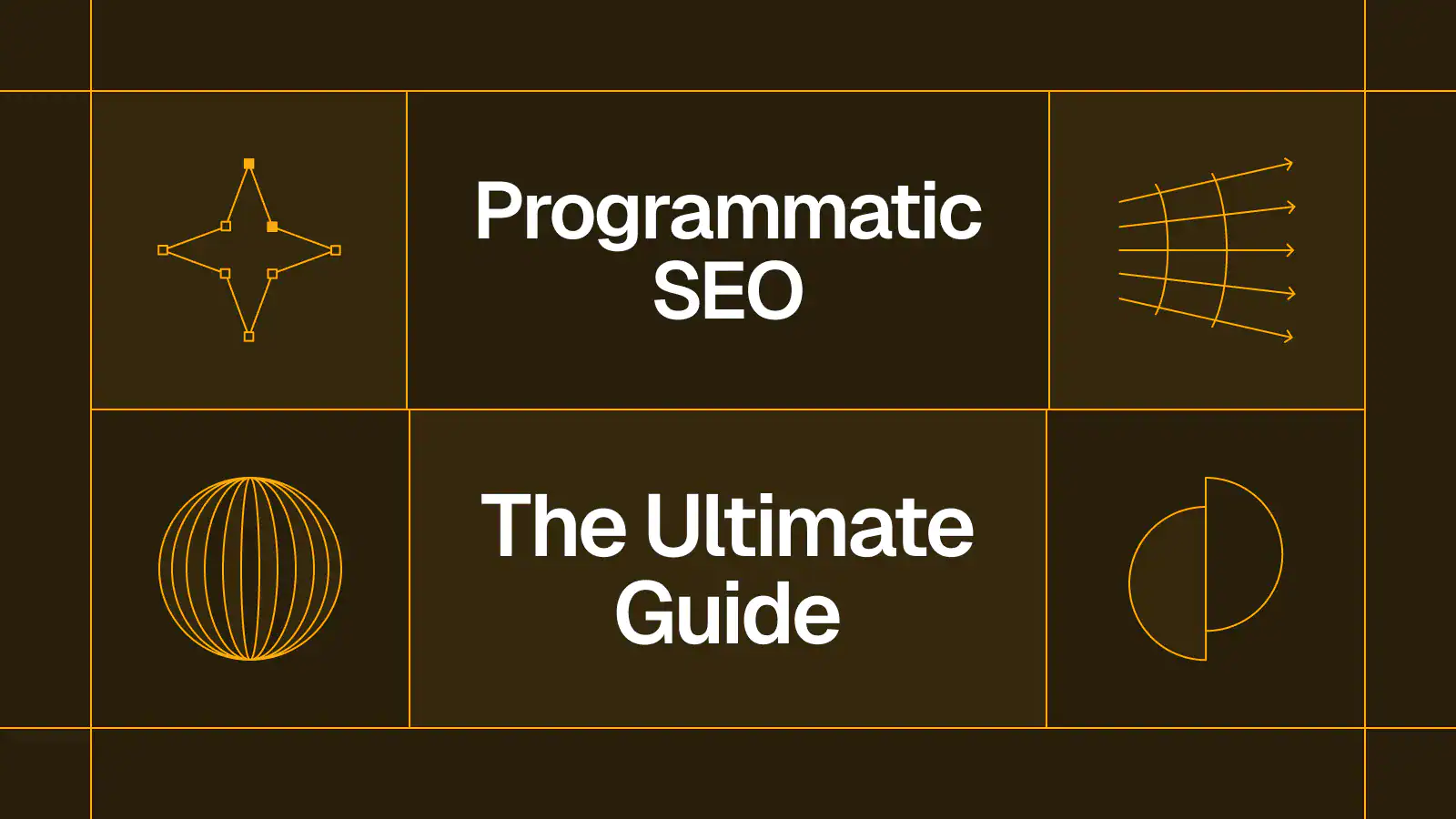You’ve done the hard work. You’ve identified your head terms, collected the data, built the templates, and launched thousands—or even hundreds of thousands—of programmatic SEO (pSEO) pages. Yet, you’re seeing a familiar, frustrating pattern: a massive number of indexed pages with only a trickle of organic traffic.
If this sounds familiar, you’re not alone. Programmatic SEO is not a “set it and forget it” strategy. It’s about scaling best practices, and success hinges on understanding how Google evaluates these pages.
This guide dives into the most critical Google ranking factors specifically for programmatic SEO pages, helping you turn your scaled content from an indexing liability into a powerful traffic-generating asset.

The Core Principle: Is Programmatic Content Spam?
Let’s address the biggest concern first. Google’s official stance is clear: content’s method of creation is irrelevant. What matters is its quality and helpfulness.
“Our long-standing guidance has been that content created primarily for search engine rankings, however it is done, is a violation of our spam policies. If you’re using automation… to generate content for the primary purpose of manipulating search rankings… that’s a violation of our spam policies.” – Google Search Central
The takeaway is simple: Programmatic SEO is only spam if it produces spammy, unhelpful content. If you focus on creating genuine value for the user at scale, you’re aligning with Google’s goals. The following ranking factors are all viewed through this lens of “helpful content.”
Top 7 Ranking Factors for Programmatic SEO Pages
1. Unique Value & Content Quality (Beyond the Template)
This is the most important factor. If every page is 95% identical boilerplate text with only a city name swapped out, you’re creating thin, low-value content that Google will likely ignore. Your goal is to make each page a uniquely valuable resource.
How to achieve this:
- Integrate Unique Data Points: Go beyond the obvious. For a real estate pSEO play, don’t just list “{City} homes for sale.” Incorporate unique data like average price per square foot, local school ratings, walkability scores, market trends for that specific area, or crime statistics.
- Generate Unique Media: Programmatically create unique images, charts, or maps for each page. For example, a map highlighting all the {product} locations in {city}.
- Incorporate User-Generated Content (UGC): If applicable, pull in reviews, ratings, or comments specific to the page’s topic. This is a powerful way to add unique, relevant text.
- Vary Content Structure: Use conditional logic in your templates to show or hide certain sections based on available data. This prevents pages with sparse data from looking empty and thin.
2. A Scalable & Logical Internal Linking Architecture
With potentially millions of pages, you can’t rely on Google to find every single one through your sitemap alone. A smart internal linking structure is non-negotiable for discoverability and authority distribution.
How to achieve this:
- Parent-Child & Sibling Linking: Create a logical hierarchy. A “State” page should link down to its “City” pages (parent-child). Each “City” page should then link to other relevant cities within that state (sibling).
- Programmatic Breadcrumbs: Implement breadcrumbs on every page template. This helps both users and search engines understand where a page sits within your site’s structure (e.g.,
Home > Texas > Austin > Plumbers). - Contextual Links: Identify opportunities to programmatically link between related pSEO templates. A page for “best hiking trails in {city}” could link to the page for “best camping supply stores in {city}”.
3. Page Experience & Core Web Vitals at Scale
When one template generates 100,000 pages, a single performance issue is magnified 100,000 times. Excellent page experience is crucial.
How to achieve this:
- Optimize Your Template: Your base template must be optimized for Core Web Vitals (LCP, INP, CLS). Compress CSS, defer non-critical JavaScript, and ensure elements don’t shift during load.
- Image Optimization: Programmatically compress and serve images in next-gen formats like WebP. Use a Content Delivery Network (CDN) to serve assets quickly.
- Mobile-First Design: Ensure your page template is flawlessly responsive. Google primarily uses mobile-first indexing, so your pages must be perfect on mobile devices.
4. Scalable E-E-A-T (Experience, Expertise, Authoritativeness, Trust)
Trust is hard to build, especially across automated pages. You must programmatically inject signals that build confidence.
How to achieve this:
- Cite Your Sources: If you’re using data from external sources, clearly attribute it on every page. For example, “Housing data sourced from the National Association of Realtors.”
- Authoritative About/Methodology Pages: Create a detailed “About Us” or “How We Source Our Data” page and link to it from the footer of your pSEO pages. This explains your process and builds trust in your brand.
- Structured Data: Use
Organizationschema to help Google connect your pages to your brand entity.
5. Granular & Dynamic Structured Data (Schema Markup)
Schema markup is a language that helps search engines understand the content and context of your pages with perfect clarity. For pSEO, it’s essential for getting rich results and ranking for specific queries.
How to achieve this:
- Dynamic Implementation: Your structured data should be populated dynamically from your database, just like your on-page content.
- Use the Right Schema Type:
- Local Businesses:
LocalBusiness - Job Boards:
JobPosting - Product Pages:
Product - Review Sites:
AggregateRating - Q&A Pages:
FAQPage
- Local Businesses:
- Validate: Always test your template with a few live URLs using Google’s Rich Results Test tool to ensure there are no errors.
6. Clean URL Structure & On-Page SEO Basics
Don’t neglect the fundamentals. Your on-page SEO elements must be clean, unique, and optimized at scale.
How to achieve this:
- Programmatic Title Tags & Meta Descriptions: Create compelling, unique titles and descriptions using your data variables. Avoid truncation. For example:
- Title:
Top 15 {Job Title} Jobs in {City}, {State} | Apply Now - Meta:
Browse {count} open {Job Title} positions in {City}. Find your next opportunity with {Brand Name}. New listings added daily.
- Title:
- Logical URL Slugs: Create clean, readable, and keyword-rich URLs.
- Good:
example.com/services/plumbing/texas/austin - Bad:
example.com/page.php?id=8217&cat=4
- Good:
- Dynamic Headings: Your H1s, H2s, etc., should also use variables to be specific to the page. The H1 should almost always be the primary target keyword for the page.
7. Strategic Indexing
More pages do not always equal more traffic. Indexing thousands of zero-value pages (e.g., pages for towns with no data) can lead to “index bloat,” which can harm your site’s overall perceived quality.
How to achieve this:
- Set Quality Thresholds: Create a rule in your system. For example, “Only generate a page for a city if it has at least 3 data points (e.g., 3 job listings, 3 homes for sale).”
- Use
noindexStrategically: For pages that must exist for navigation but have very little unique value, apply anoindextag to tell Google not to include them in its search results.
Final Thoughts: Quality is the Ultimate Scalable Strategy

Programmatic SEO is a powerful engine for organic growth, but it’s not a shortcut around quality. Google’s algorithms are smarter than ever at distinguishing between helpful content created at scale and low-effort spam.
By focusing on these ranking factors—unique value, a strong technical foundation, and a user-first mindset—you can build a pSEO project that doesn’t just get indexed but dominates the search results for thousands of long-tail keywords.
Originally posted 2025-02-02 04:29:22.


